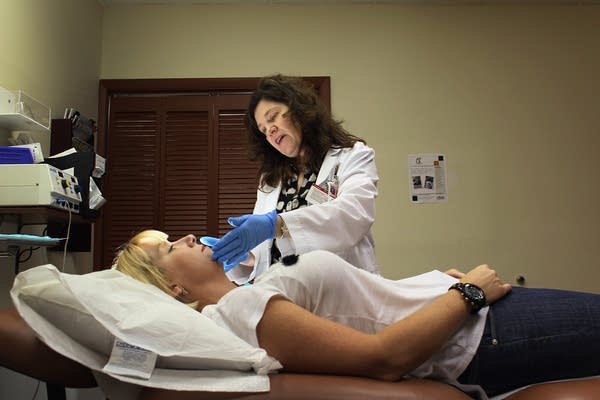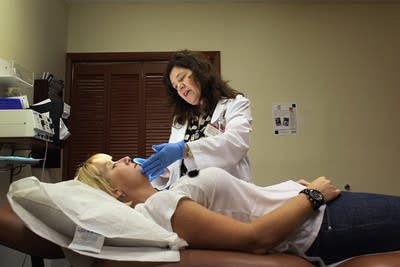Mayo study: Skin cancer rates rising rapidly among young adults
Go Deeper.
Create an account or log in to save stories.
Like this?
Thanks for liking this story! We have added it to a list of your favorite stories.

Melanoma rates among young women are eight-times higher than they were 40 years ago, according to a study published today by researchers at the Mayo Clinic.
Researchers tracked cases of melanoma, the most deadly kind of skin cancer, in Olmsted County health records from 1970 through 2009. The melanoma incidence among women ages 18 to 39 showed a sharper increase than among men in the same age group. In men, the rate increased four-fold during the period.
The study published in Mayo Clinic Proceedings showed higher rates of melanoma than seen in previous studies and tapped data in the Rochester Epidemiology Project, which has led to thousands of studies on diseases and medical conditions since 1966.
Mayo dermatologist Dr. Kurtis Reed said looking at a well-defined population may have led to more accurate results than studies that rely on national cancer databases.
Turn Up Your Support
MPR News helps you turn down the noise and build shared understanding. Turn up your support for this public resource and keep trusted journalism accessible to all.
"Those large databases are known to have some under-reporting bias, and so the true incidence is hard to estimate from those databases," he said.
The study showed an overall rate of 16.9 cases per 100,000 people. Among young adult women, the rate was 23.2, and for men, 10.8, according to the study.
Researchers calculated the rates from the 256 new cases of melanoma found in Olmsted County residents ages 18 to 39 during the 40-year period.
People who use any type of tanning device, for any amount of time, are 74 percent more likely to develop a melanoma.
Reed said the study's findings would only be applicable to similar populations. Olmsted County's population, like the rest of Minnesota, is about 85 percent white. People with lighter skin are at higher risk for melanoma.
The Mayo study didn't look at what caused the melanoma cases in Olmsted County, but researchers were quick to suggest one possible culprit: indoor tanning.
"We know for sure that ultra-violet radiation is linked to cancer in a big way, especially tanning bed exposure," said Mayo dermatologist Dr. Jerry Brewer, who led the study.
But John Overstreet, a spokesman for the Indoor Tanning Association, said the Mayo researchers shouldn't be jumping to conclusions about tanning.
"What's really frustrating for us is that you see the study, the study has nothing to do with indoor tanning, and the folks talking about it all they want to talk about is indoor tanning, and it's just opinion," he said.
The Mayo researchers acknowledged that to prove a link they'd need to survey young adults in Olmsted County about tanning bed use and follow them over a long period of time to see if they develop cancer. But they cited previous studies that have shown a link between skin cancer and tanning bed use.
In 2010, University of Minnesota researchers found a strong association between tanning-device use and melanoma.
University researchers found that people who use any type of tanning device, for any amount of time, are 74 percent more likely to develop a melanoma.
The results of the Mayo study also feed the growing concern nationally over skin cancer. A researcher at the Centers for Disease Control and Prevention said last week that skin cancer is a future epidemic in the making.
National cancer rates overall are on the decline, but melanoma cases are increasing, especially among young adults. That's true for all of Minnesota as well.
State health officials say doctors diagnose melanoma about 166 times each year — or every two to three days — for people ages 20 to 39.
"Considering the youth of that population, how young they are and how much of their lives they have in front of them, I think that's a pretty staggering figure," said Carin Perkins, an epidemiologist who works in the Minnesota Department of Health's cancer surveillance section.
Perkins said public health officials are also concerned about the gender gap. Melanoma rates among young women are almost two times higher than in men.
"That doesn't prove the point that it's tanning beds, but it certainly looks like there's something in the behavior of women, young women, that puts them at greater risk," she said.
The Mayo Clinic researchers say they hope the study will lead more primary care doctors to educate their young patients about melanoma.
Reed said doctors should also have a low threshold for sending skin lesions for biopsies.
"Our threshold should be the same as it is for older people, because the risk is very real," he said.




